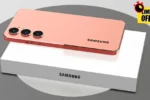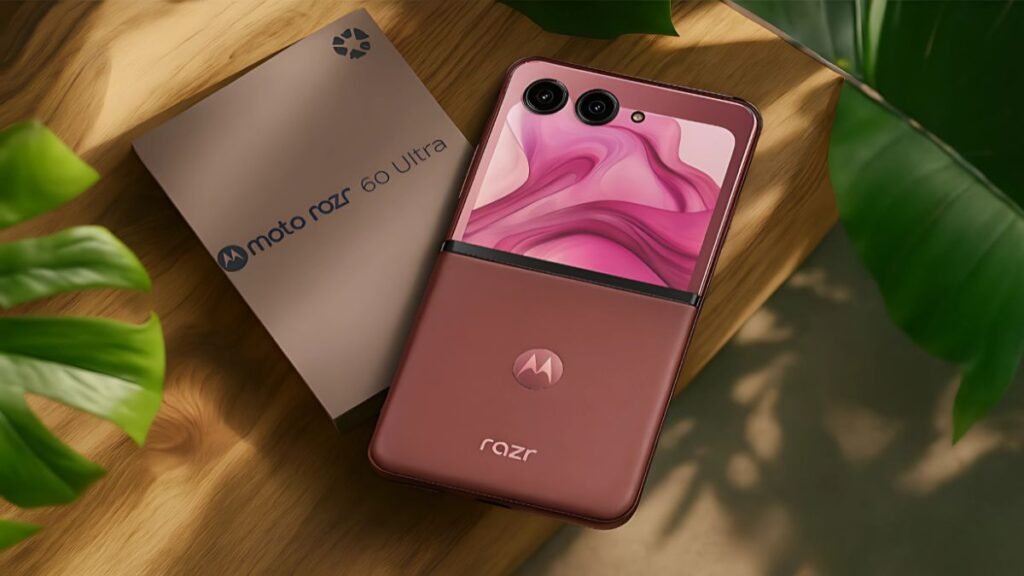iOS 26 India Release: We’ll start with the most important point: as of now, Apple has not officially announced iOS 26. Apple typically unveils a new iOS version at its annual Worldwide Developers Conference (WWDC) in early June and releases the final public build around September of that same year. Since iOS 26 sits several cycles ahead of the present, any “confirmed” date floating around is speculation. What we can do, however, is analyze Apple’s historical cadence, explain how rollouts hit India, and help you prepare so you’re ready on day one—whenever that day lands. If you’ve followed the iOS 17 and iOS 18 timelines, you’ll recognize the pattern: developer beta in June, public beta a few weeks later, Release Candidate near the September iPhone event, and a public release shortly after. India receives the update simultaneously with other regions—meaning there’s no “India-only delay,” just time zone differences. In short, we don’t have a calendar date from Apple for iOS 26, but we can forecast the window, the likely time-of-day in IST, and the exact steps to upgrade smoothly without surprises.
Expected Timeline for iOS 26 in India (Based on Apple’s Yearly Pattern)
While exact dates remain unannounced, Apple’s rhythm is reliably consistent. Historically, WWDC happens in early June, where the next iOS is previewed, followed by months of betas. The final public release usually drops in September, aligning with new iPhone launches. India shares the same global rollout; the only difference is your local clock. Apple often pushes major updates around 10 a.m. Pacific Time (PT). Converted to India Standard Time (IST), that’s typically late evening on the same calendar date or early the next morning. If a release hits at 10 a.m. PT, users in India can expect availability around 10:30–11:30 p.m. IST that day—or, depending on daylight savings shifts, near 11:30 p.m.–12:30 a.m. IST. Sometimes, the update appears slightly later on certain devices as Apple’s servers manage global demand, but you won’t be “behind” simply because you’re in India. We advise planning your update window for late evening or the following morning to avoid rush-hour server congestion, especially if you prefer a clean, stress-free upgrade with full device backups in place.
Apple’s Release Rhythm at a Glance
Apple tends to keep a tight ship: June preview → summer betas → September public release. Minor point updates (iOS 26.0.1, 26.1, etc.) often follow within weeks to fix bugs, patch security issues, and refine features.
From WWDC to the GM (Release Candidate)
After the early betas, Apple ships a Release Candidate (sometimes called “GM build”). If no critical bugs are found, it becomes the exact public release build—or one that’s nearly identical.
IST Timing Nuances
What feels like “late night” in India is just Apple’s standard morning release in California. Don’t worry—this doesn’t affect feature availability, only the local hour you tap “Download and Install.”
How iOS Rollouts Work for India (Simultaneous, Not Secondary)
Let’s dispel a common myth: Apple does not prioritize one country’s features over another at launch for core iOS availability. The update is pushed globally. India’s “delay” is only how time zones work. Network load can cause staggered visibility by minutes or an hour, but that’s normal worldwide. On release day, millions of iPhones ping Apple’s servers. If you don’t see the update the first time you check, wait a bit and try again. Another tip: avoid ultra-peak moments (for example, the first 15–30 minutes after the announcement). Many users in India prefer to install early the next morning when traffic cools. Enterprise-managed devices (with MDM profiles) may wait until IT approves the upgrade. For personal devices, as long as you’ve got a stable Wi-Fi connection, 50%+ battery (or are plugged into power), and sufficient storage, you’re good. Also, ensure you know your Apple ID password and device passcode—installers sometimes prompt for them during verification or after reboot.
Global vs. Region: Feature Parity
Core features release globally. Occasionally, region-specific services (like particular payments or regulatory toggles) roll out in phases, but the iOS build itself is the same across regions.
Why Some Users See It Earlier
Content Delivery Networks (CDNs) and server caching can make the update appear a touch earlier for some users. This is normal and doesn’t indicate favoritism or a different build.
Staged Rollout Myths
Apple does not quietly release “India-late builds.” Variations in timing are typically due to caching and server propagation, not policy.
Predicted Launch Window and What Could Shift It
Given Apple’s calendar, expect iOS 26 to follow a June preview (WWDC) and a September public release pattern—again, with the caveat that iOS 26 hasn’t been announced yet. Historically, the final release aligns closely with the year’s iPhone event. Could Apple shift timelines? Sure—but that’s rare and typically driven by major platform changes, regulatory requirements, or unforeseen stability concerns spotted during betas. When such shifts happen, Apple communicates the new plan near the event, not months in advance. For users in India, the practical question isn’t “Which day?” but “What hour?”—and that’s generally late evening IST on release day. To prepare, keep your backups recent, free up storage (5–10 GB is comfortable for large updates), and update your apps beforehand so they’re ready for the new frameworks. If you’ve joined betas, be aware that the final public build might require a small update from your Release Candidate to the official version.
Historical Patterns to Consider
- WWDC early June (developer beta)
- Public beta late June/July
- iPhone event September
- iOS public release: typically within days of the event
Factors That Could Alter Timing
Significant bugs, last-minute security discoveries, or compliance changes may delay the drop by days or weeks, but outright cancellations or dramatic calendar shifts are rare.
Public & Developer Betas: How the Cadence Usually Unfolds
If you want early access to features, the public beta is the safer route compared to the developer beta. Developer betas appear immediately post-WWDC and are meant for testing apps. Public betas usually arrive a few weeks later when builds stabilize. In India, you can enroll your Apple ID, install the beta profile (or toggle settings, depending on Apple’s setup at the time), and get OTA updates just like the stable channel. The trade-off? Betas can be buggy. Expect shorter battery life, occasional app crashes, and features that change over time. If your iPhone is mission-critical, consider staying on stable iOS and trying the beta on a secondary device instead. Once the Release Candidate hits, you’ll be closer to the real thing; just remember that RCs aren’t guaranteed final until Apple says so. When the public build arrives, most RC users get a tiny patch or nothing at all.
Joining the Public Beta (General Guidance)
Back up first, ensure enough free space, and be ready for performance hiccups. Know how to roll back if needed.
Beta Risks to Keep in Mind
Some banking or authentication apps may refuse to run on betas. Battery drain and Bluetooth glitches can appear. Always review release notes.
Expected Device Compatibility (Based on Apple’s Support Lifespan)
Apple typically supports iPhones for 5–6 years of major iOS updates. By the time iOS 26 arrives, today’s newest iPhones will likely still be supported, while older devices inch toward cutoff. Apple weighs performance, security overhead, and feature complexity when deciding compatibility. In India, this plays out the same as everywhere else: if your device is on the supported list, you’ll receive the update on day one. For borderline models, Apple sometimes restricts resource-heavy features to newer chips while still delivering security updates and core improvements. The simplest way to anticipate support is to track your device’s chipset generation and Apple’s historical patterns—new SoCs typically get the fullest feature set, older ones keep essentials.
Chipset Lifespan Rules of Thumb
- New A-series chips enjoy full features for multiple cycles.
- Older chips may receive the OS but miss certain AI/vision features due to hardware limits.
How to Verify Your Model
Go to Settings → General → About. Note the “Model Name” and “Model Number.” Keep these handy when Apple publishes official compatibility lists.
What iOS 26 Might Focus On (Speculation, Not Confirmation)
Without official notes, we can only make educated guesses informed by recent trends: tighter privacy controls, deeper on-device intelligence, improved battery management, and more flexible customization. India-specific improvements often include better support for Indic languages, regional Siri improvements, and compliance-ready toggles for local regulations. We also anticipate continued security hardening—think refined app permissions and even faster Rapid Security Responses. Imagining iOS 26, we’d expect Apple to double down on stability and reliability while sprinkling headline features that showcase new iPhone hardware. But until Apple speaks, treat everything here as directional, not definitive. Our approach is to separate what’s likely (based on long-running patterns) from what’s pure rumor (which we avoid).
The AI & Intelligence Angle
Recent cycles emphasize on-device processing for speed and privacy. Expect Apple to keep features performant even on slower networks prevalent in some regions.
Performance, Battery, and Privacy
Apple routinely tunes background tasks, app wakeups, and battery reporting; we expect those refinements to continue.
Pre-Update Prep: Make Release Day Boring (In a Good Way)
A smooth upgrade is less about the exact date and more about preparation. Start with a complete backup: iCloud or local via Finder/iTunes. Free up storage; large updates often need several gigabytes to unpack. Update all apps so developers’ compatibility fixes are in place. Note your Apple ID and device passcode—these are often required during or after installation. Confirm your two-factor authentication method is accessible. If your iPhone is older, consider removing heavy photos/videos temporarily or offloading unused apps. For sensitive workflows (like UPI apps, stock trading, or enterprise email), verify you know your login info in case you need to re-authenticate. Finally, check accessories: ensure Lightning/USB-C cables and chargers are reliable. A failing cable can interrupt a tethered update and cause unnecessary stress.
Pre-Update Checklist (Quick Hits)
- Back up (iCloud or local)
- Free 5–10 GB storage
- Update apps
- Confirm Apple ID & passcode
- Verify 2FA method
- Check cables/chargers
Optional: Clean Install Strategy
Some power users prefer a clean install to maximize performance. Not mandatory, but it can reduce legacy cruft on very old devices.





